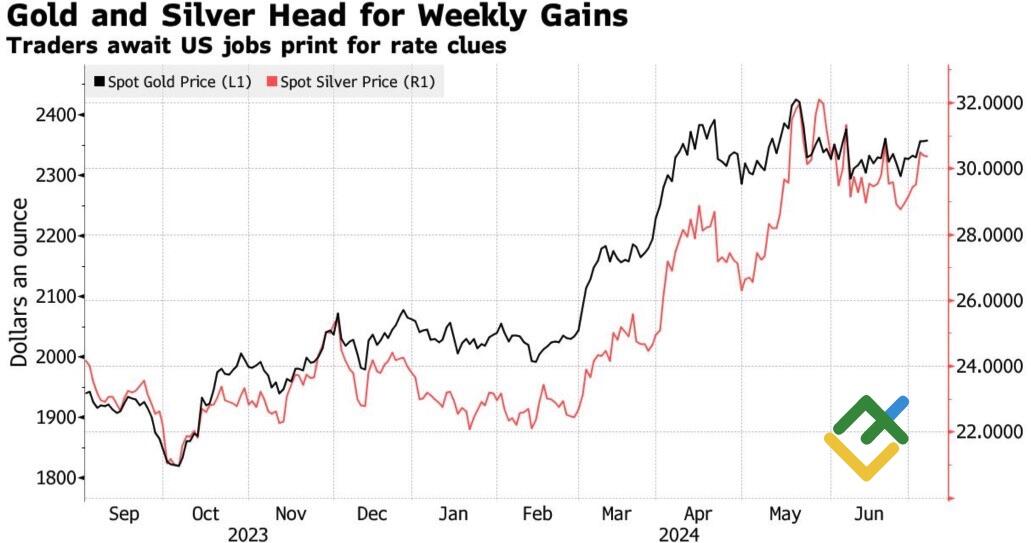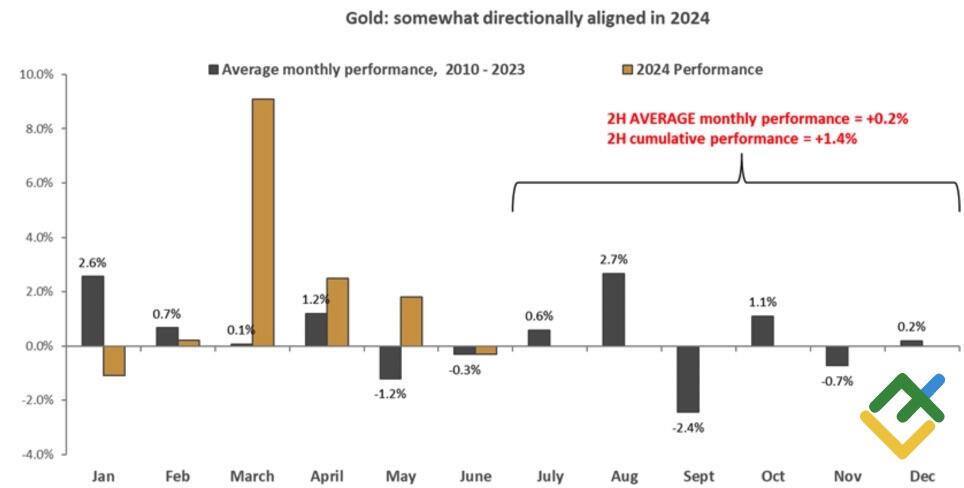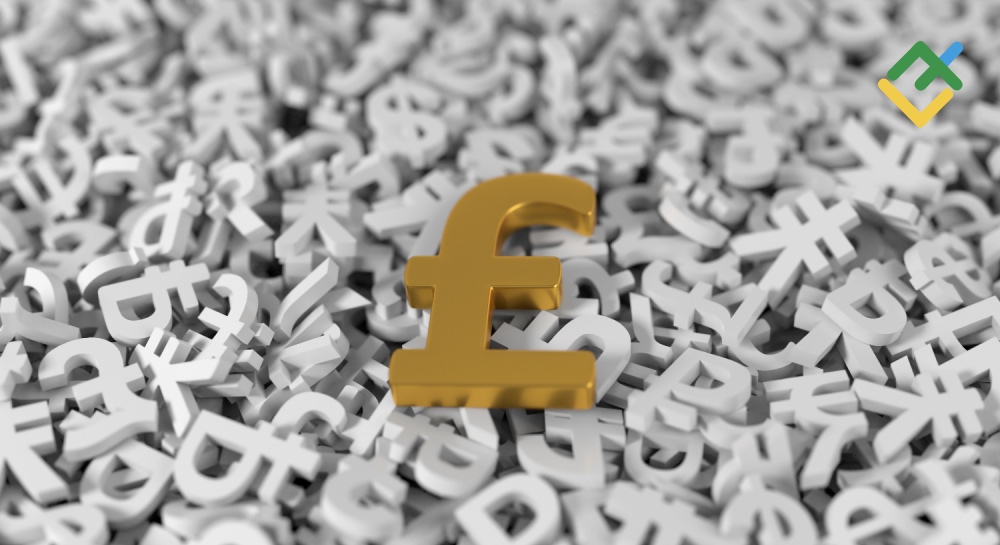
The precious metal withstood a strong US dollar and growing Treasury yields. What will happen when a headwind changes to a tailwind? Let’s discuss it and make a trading plan.
The article covers the following subjects:
Key takeaways
- Gold resisted a strong dollar and rising Treasury yields.
- Bullish drivers, such as de-dollarisation and geopolitics, are still in play.
- The precious metal will soar if the Fed starts talking about rate cuts.
- Gold may reach $2,400, $2,425, and $2,480 an ounce.
Monthly fundamental forecast for gold
The old ways are the best ways. The Fed stopped talking about a Fed funds rate cut and predicted only one monetary expansion act instead of three acts in its June forecast for 2024, but gold showed three quarterly gains in a row all the same, hitting a record high in May. Investors seem to have forgotten how favorable monetary easing is to the XAUUSD, but they will recall this for sure in the second half of the year.
According to WGC, European gold ETFs have seen a money inflow following the ECB’s deposit rate cut. High borrowing costs in the United States and elsewhere have curbed investor appetite for specialized exchange-traded funds, but demand for their products rose from the ashes once central banks switched to policy easing. The process could reverse as the start of the Fed’s monetary expansion approaches.
Derivatives are giving a 74% chance that this will happen in September following a series of disappointing stats on the labor market, business activity, and the US trade balance. The dovish notes in the minutes of the last FOMC meeting also played an important role as the Fed showed concern about the cooling of the US economy, which is gaining momentum. So, it’s time to talk about lowering rates, which will support the entire precious metals sector.
Gold/silver trends
Source: Bloomberg.
If gold could withstand such a strong headwind as the dollar leading the race of major world currencies and soaring US Treasury yields, what would happen when these processes reverse? As the start date for the Fed’s monetary expansion approaches, the greenback will be actively sold off, and debt rates will begin to decline. It’s time for the precious metal to strike! Moreover, seasonal factors can also be beneficial.
According to MKS PAMP research, gold tends to perform better in the second half of the year than in the first. Since 2010, its value grew by an average of 1.2% in January-June and 1.4% in July-December. In the first half of 2024, the precious metal rose 2% per month amid active central-bank buying, high demand in China, and investor concerns about geopolitics, wars, inflation, and de-dollarisation. Most of these factors remain in play, so the XAUUSD bulls have an excellent chance of beating the July-December average.
Gold’s seasonal trends
Source: Kitco.
Monthly trading plan for gold
Add the Fed’s policy easing to high geopolitical risks and de-dollarisation, and you’ll have an explosive mixture that will fuel the XAUUSD‘s rally. Downbeat statistics on the US labor market for June will allow us to build up the gold longs opened at around $2300-2330. The first targets are $2,400, $2,425, and $2,480 an ounce.
Price chart of XAUUSD in real time mode
The content of this article reflects the author’s opinion and does not necessarily reflect the official position of LiteFinance. The material published on this page is provided for informational purposes only and should not be considered as the provision of investment advice for the purposes of Directive 2004/39/EC.
{{value}} ( {{count}} {{title}} )
This post is originally published on LITEFINANCE.





